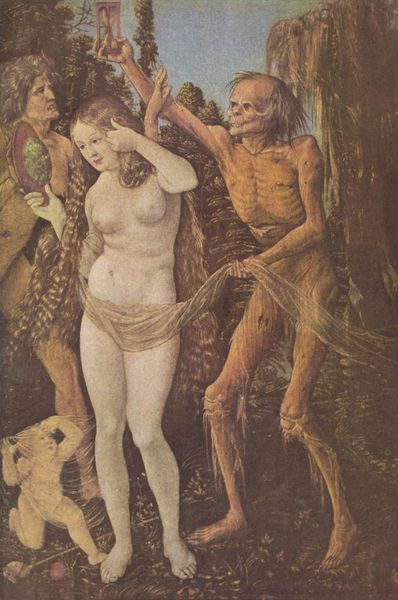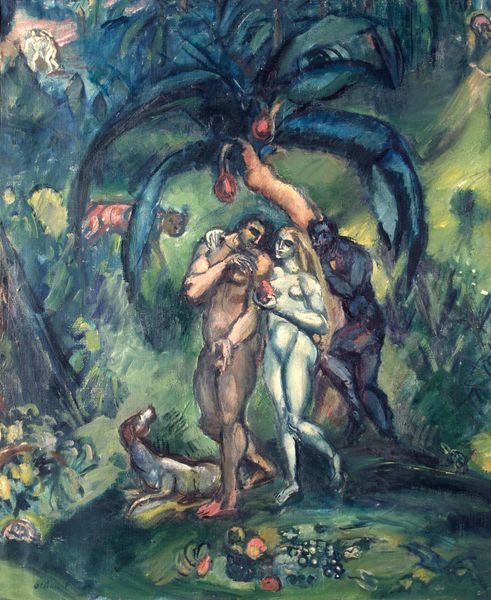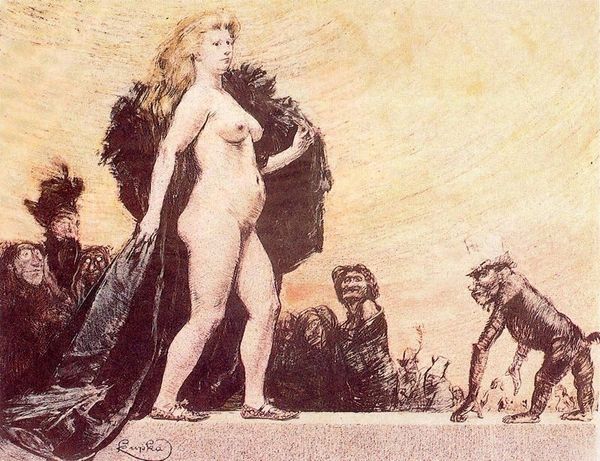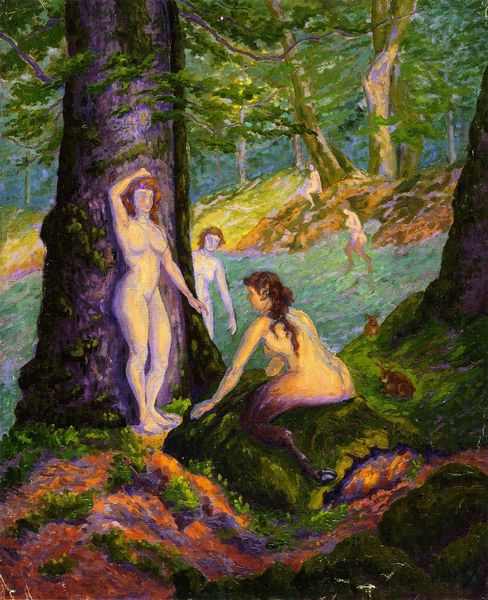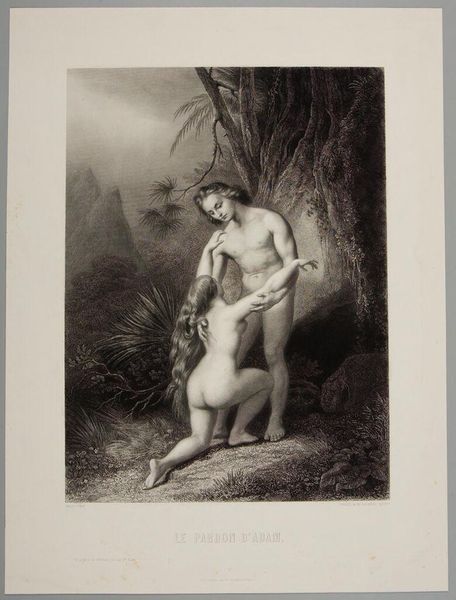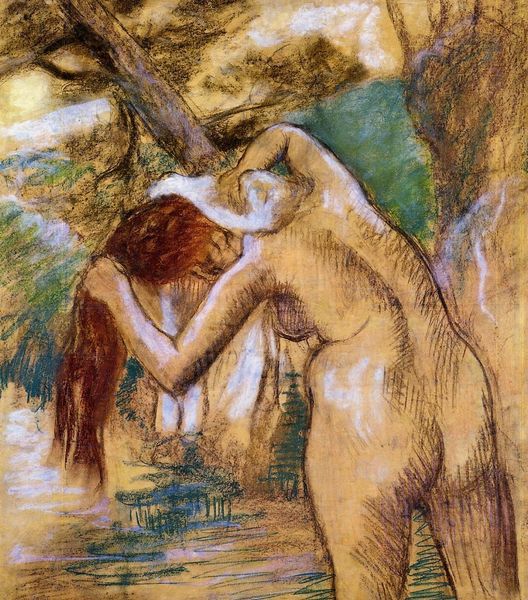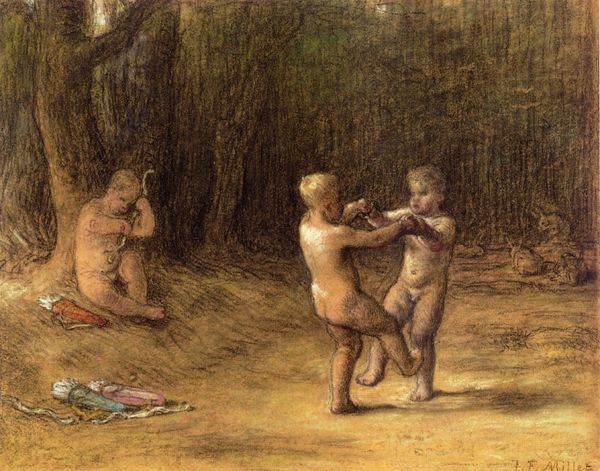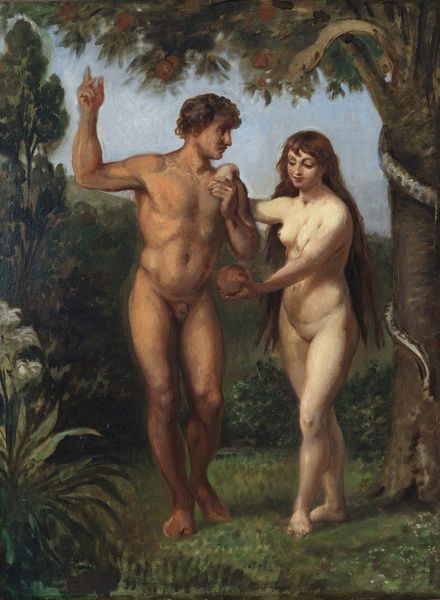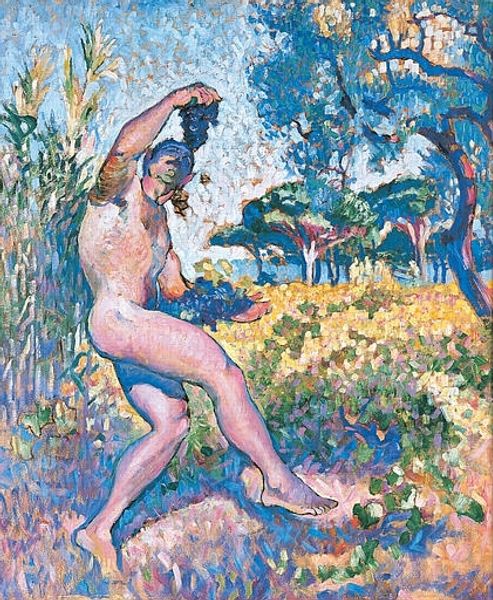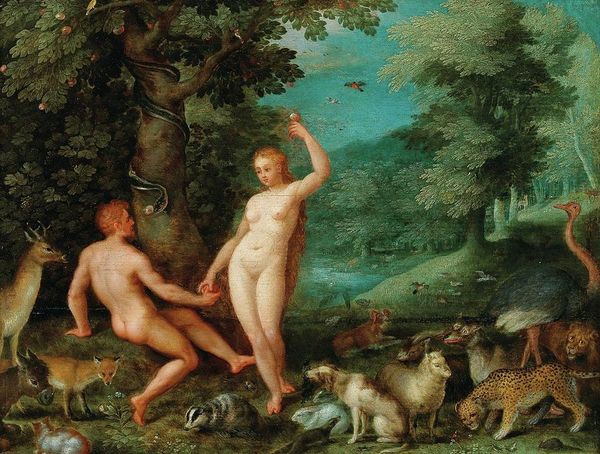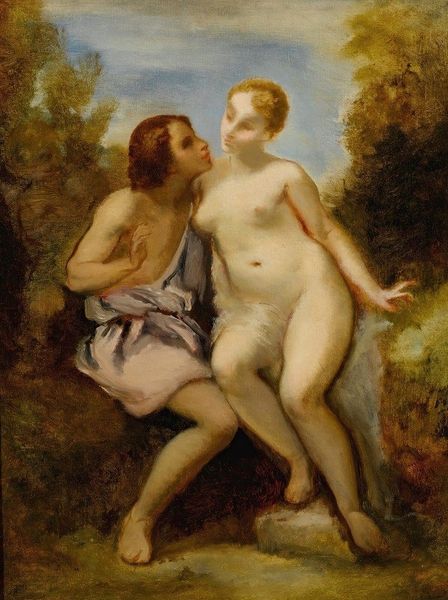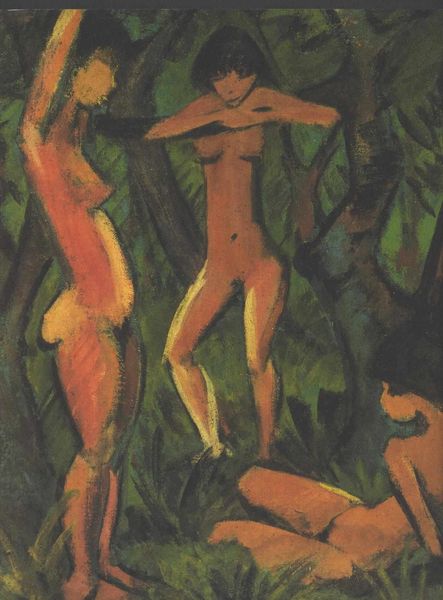
Copyright: Public domain
Editor: This is Ilya Repin's "Temptation," created in 1891 using colored pencils and pastels. It depicts Adam and Eve in the Garden of Eden, though with a distinctly Romantic sensibility. I'm struck by the sort of dreamy, ethereal atmosphere. How do you interpret this work within its historical context? Curator: Repin, although associated with realism, here seems to engage with a much older trope. It isn't merely a depiction of a biblical scene. It also presents a comment on the complex socio-political landscape of late 19th-century Russia, especially gender and power dynamics. Editor: Gender and power? Could you expand on that? I initially saw it just as a romanticized retelling. Curator: Consider Eve's positioning. She is both offering knowledge and holding onto power, while Adam reaches for that potential transformation, doesn’t he? Look at his gesture and the almost surprised look on his face. In 19th-century Russia, where traditional patriarchal structures were being questioned, this artistic choice becomes incredibly potent. It speaks to the anxieties and burgeoning freedoms associated with changing societal norms. What do you think of their expressions? Editor: They seem... uncertain, even vulnerable. Almost as if the roles are not so well defined. Curator: Precisely! And notice the garden itself. Is it a nurturing space, or an enclosure? Is knowledge truly freeing, or a different kind of trap? How might contemporary feminist theory help us to dissect the ways women have historically been represented as both the source of, and solution to, society’s woes? Editor: That makes me rethink my initial reaction entirely. It is less about a straightforward narrative and more about the inherent complexities and power struggles in human relationships and societal evolution. Curator: Absolutely. Seeing the artwork through multiple lenses, including the historical and the theoretical, gives us access to many interpretations, as opposed to a singular reading. It reflects our contemporary concern with multiple meanings and interpretations, doesn’t it? Editor: I never would have considered that the choice of subject matter was a way to depict that kind of anxiety. Thank you, I’ve definitely learned a lot.
Comments
No comments
Be the first to comment and join the conversation on the ultimate creative platform.

